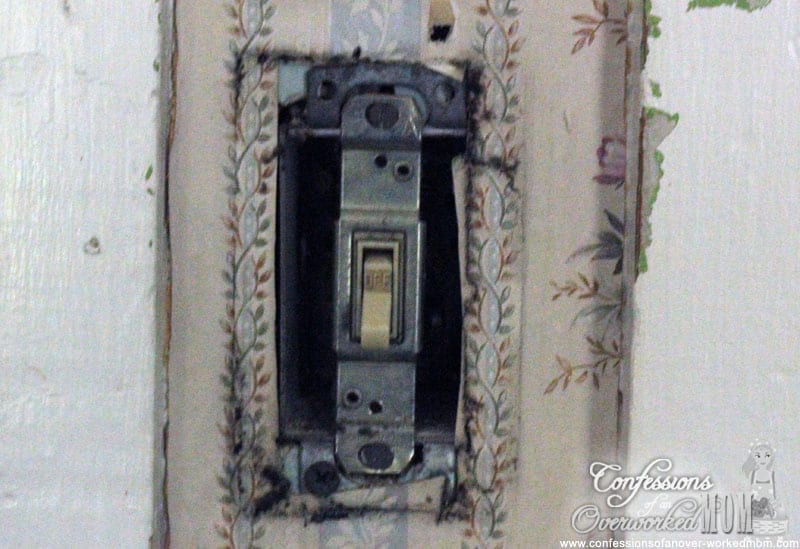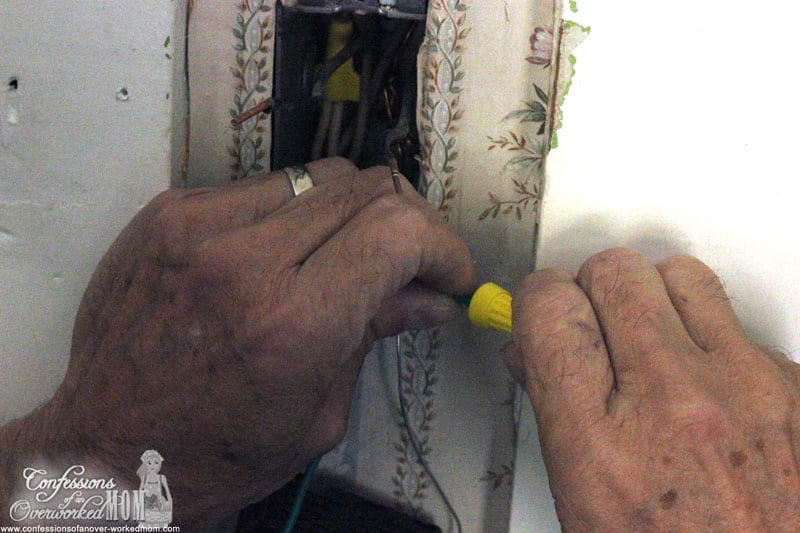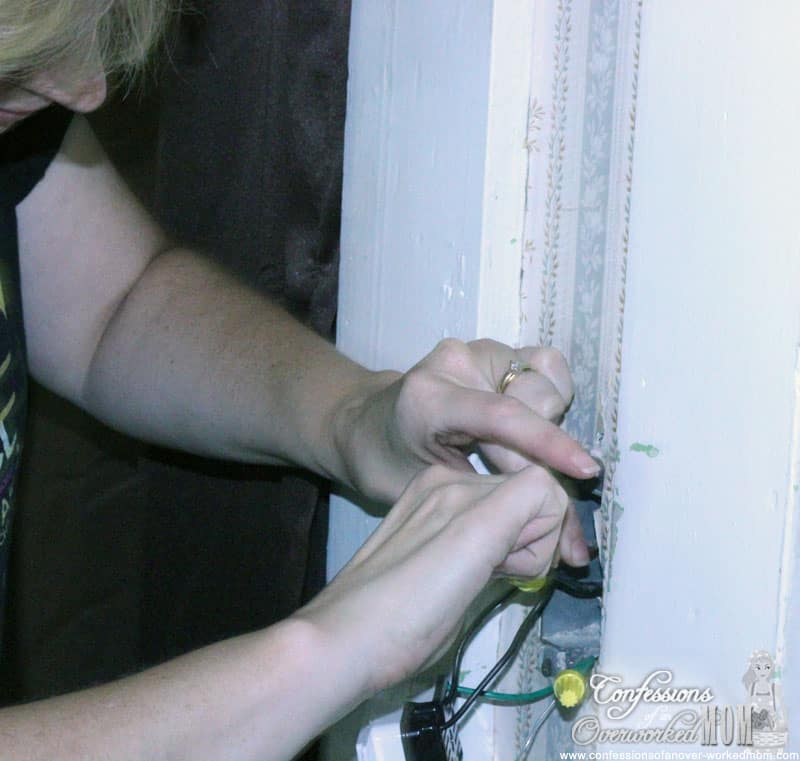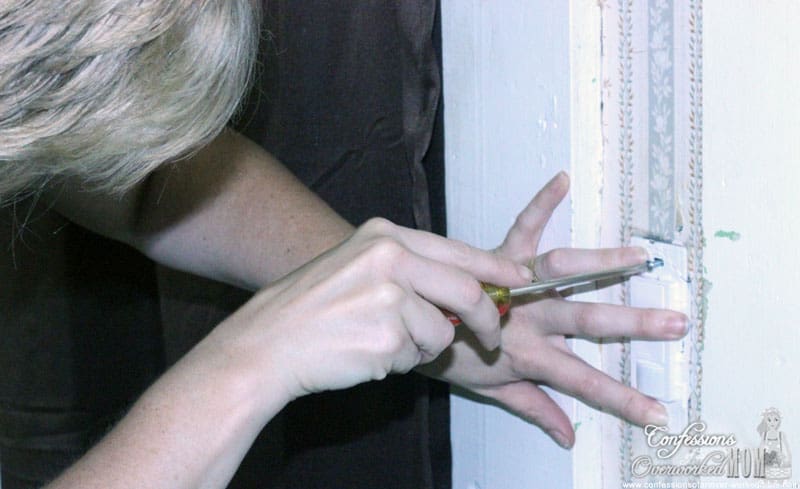Last Updated on November 25, 2022 by Ellen Christian
Are you wondering how to install a motion sensor light switch? Learn more about how I tackled this easy DIY lighting project.
Posts may be sponsored. This post contains affiliate links, which means I will make a commission at no extra cost to you should you click through and make a purchase. As an Amazon Associate I earn from qualifying purchases.
How to Install a Sensor Light Switch
Did you ever walk into a room and ask yourself “Who left the lights on?” I know that’s something I do several times a day. Of course, no one admits to leaving the light on. They are absolutely positive that they turned it off.
I guess it must be the cats who forget to turn the lights off. I decided that installing a sensor light switch would be one way to tackle this problem. Since I’m the designated DIY gal in this family, it was up to me to learn how to install a sensor light switch.
I have done basic electrical DIY projects like installing our programmable thermostat so I knew I had the basic knowledge to tackle this project but I asked my Dad to come over to supervise since he has done this many times before.
This explanation is based on changing a traditional single pole switch to a Lutron Occupancy Sensor Switch for a single pole switch. You will need a screwdriver and a pair of pliers for the basic installation.
Motion sensor light switch installation
- Turn off the power at the breaker box to the light switch you are working on. This involves going down into the basement with the spiders. Do this quickly and bring a flashlight.
- Remove the faceplate from your light switch.
- Make sure the power is actually off by using a voltage tester. This is important. Don’t skip this step. You want to make sure the power is really out.
- Unscrew the switch assembly from the metal box it sits in and pull out the switch assembly carefully with the wires still attached. Look at the wires carefully.
- There should be three wires. There will be an incoming hot wire that is black (that’s where the electricity comes from) and a black return wire (that’s what takes the load to the fixture). There should also be a green wire. That is your grounding wire. The Lutron Occupancy Sensor Switch will not work if there is not a grounding wire. If you have no grounding wire, call an electrician.
DIY Note
As a note. I live in an 1865 farmhouse. Nothing in my home appears to have ever been done the correct way. When I removed the switch assembly, there were two black wires, one white wire, and one copper wire.
After talking to my husband and my father, I learned that the white wires were common wires or neutral wires and I should ignore them. The copper wire in my assembly was the same as a green wire would be in another switch assembly.
At this point, we realized that the copper wire was not long enough to connect with the green wire on the new switch assembly so my father needed to add more copper wire to make it long enough to work with.
- Very carefully, remove one wire from the old switch and attach the new wire from the Lutron switch using the wire nut or wire connector. Do this one wire at a time so you don’t get confused.
- Depending on the type of switch you had, you may need to unwrap the wire from around a screw and then straighten it before you attach the new wire using the wire nuts. My Dad did the first one to show me how and then I took over from there.
- Put the light switch assembly back into the wall carefully and screw it in.
- Attach the light switch faceplate.
- Turn power on and test.
The Lutron Occupancy Sensor Switch automatically turns lights on and off. It uses XCT Sensing Technology that makes sure lights stay on when the room is occupied. It also senses daylight and only turns lights on when they are needed. Finally, iIt works with all types of light bulbs and can save up to $25 per year in electricity.
I installed the Lutron Occupancy Sensor Switch in the master bedroom. Marty is disabled and often wakes up in the middle of the night.
With the Lutron Occupancy Sensor Switch, the switch will detect his movement and turn the light on so he can see where he is going.

Ellen is a busy mom of a 24-year-old son and 29-year-old daughter. She owns six blogs and is addicted to social media. She believes that it doesn’t have to be difficult to lead a healthy life. She shares simple healthy living tips to show busy women how to lead fulfilling lives. If you’d like to work together, email info@confessionsofanover-workedmom.com to chat.






Thank you for the tutorial. I have been wanting to install these in almost every room in my house with the little ones around. The bathrooms are the worst in my house for lights being left on!
Apparently I have a person living in this house named “not me” who always leaves lights on 🙂 This looks like an easy to follow tutorial!
This sounds like the solution to an ongoing battle with “someone” in our home whom leaves lights on. Great step by step!
This would be really useful to have! And while I think I’d like a bit of help, this doesn’t look too hard to DIY.
This is not that hard to do. I would love to have my nephew help put these in for me because someone is always leaving the lights on! I like the tutorial on this~
That didn’t look to hard to install! I wonder, though, does it trigger when you roll over in the middle of the night? We like our bedrooms a CAVE. Dark as possible.
The sensitivity of the sensor can be adjusted based on the expected level of activity in the room. The default setting is high sensitivity and will perform best for most applications – this will detect very slight motions, such as turning a page in a book. This is recommended for spaces where occupants will often be seated for long periods of time and performing fine motions. Low sensitivity is the least sensitive setting and is best used in areas of major or large motions, recommended for spaces that generally only experience large motions such as foot traffic.
That looks fairly easy to do. I think I could install this switch!
Look at you being all handy!! I don’t touch the electrical either, but am impressed you were able to take this on!
I leave the electrical work to my husband because I’ve been known to shock myself 😉 Don’t ask. It’s too embarrassing!
I will send this to my husband. He is my handyman. I don’t know how to do any of this. He always kids that I can never get rid of him because of that.